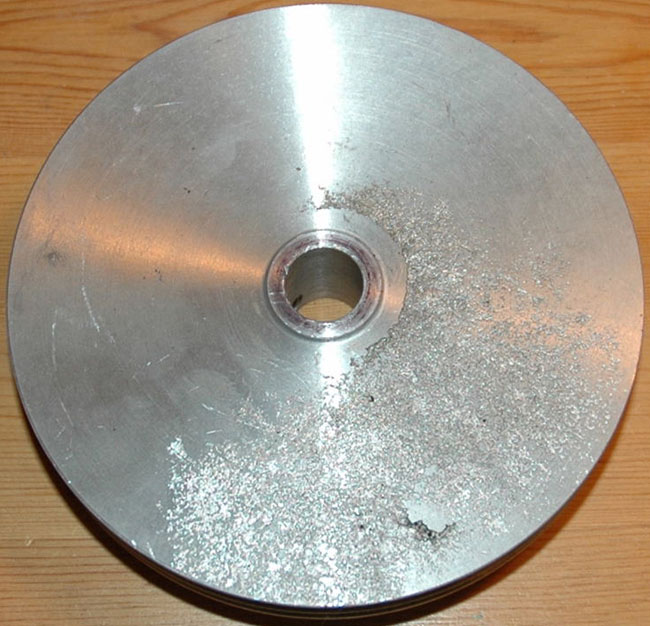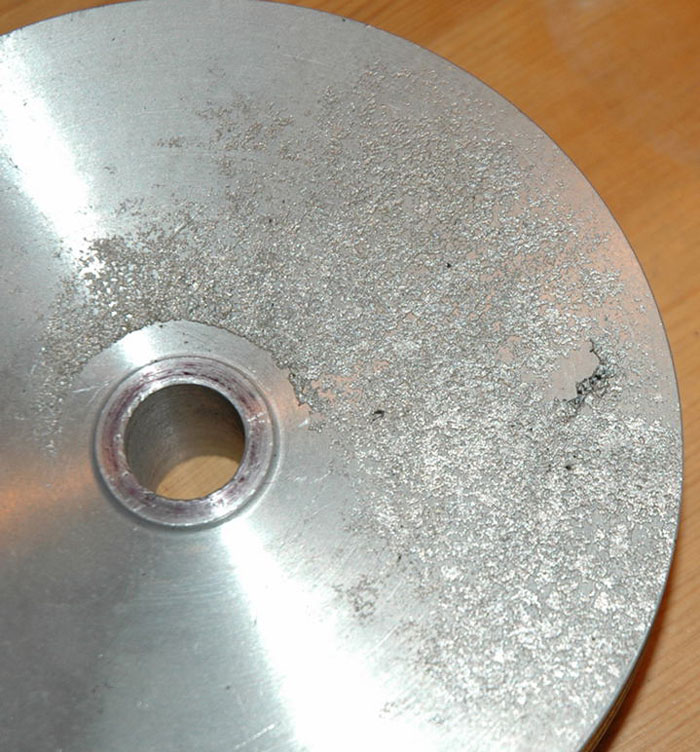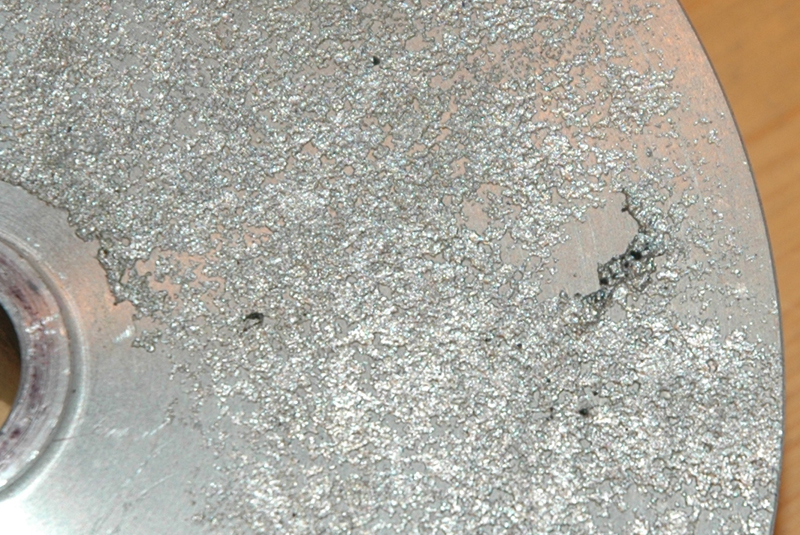As I was taking Platen and Spindle out of my Omni, I had to remove the Spindle Pulley underneath the machine. What you see here are some photos of the Spindle Pulley quality.

So what do you think of the quality of the Omni Spindle Pulley? This is a top-view of the pulley after I took it off the Spindle.

A close-up view of the Spindle Pulley top surface. One person asked me if it was a salt build-up on the pulley due to me flooding the machine. No, it is not.

Even closer pic. This is not something on the surface; these are voids and pits left behind from a faulty casting of the piece that was machined to create the part. They are anywhere from just below the machined surface to a few millimeters deep in the biggest black void.
Given that this sucker can be spun at up to 1000 RPM, those voids probably are making the pulley unbalanced, causing at least some of the high-speed vibrations.
I’m concerned that this is not viewed as a quality problem by Jersey Instruments. In my opinion this is a sub-standard or defective part that never should have been installed in the first place.
What causes me more concern is that I sent my machine back for servicing and this part had to be removed at the factory to replace the bearings. This means that they saw the condition of this part and just put it back on.
It’s a beautiful Catch-22 – there’s a defective part, but the only way you’d discover it is by doing something which would void your warranty… so they don’t have to fix it. And if they did, you’d re-void your warranty if you opened it up to check it again.
Not to belabor the point, but is this the indication of a well-built, quality machine?

How can anyone on the one hand promote such a hi-tech, highly accurate machine and on the other hand assemble it with such sub-standard material with no apparent quality control? I suspect that the people producing this machine are in over their heads and should not have taken on this complex job. Sad that the original manufacturer in Australia has had his excellent idea turn into such a nightmare.